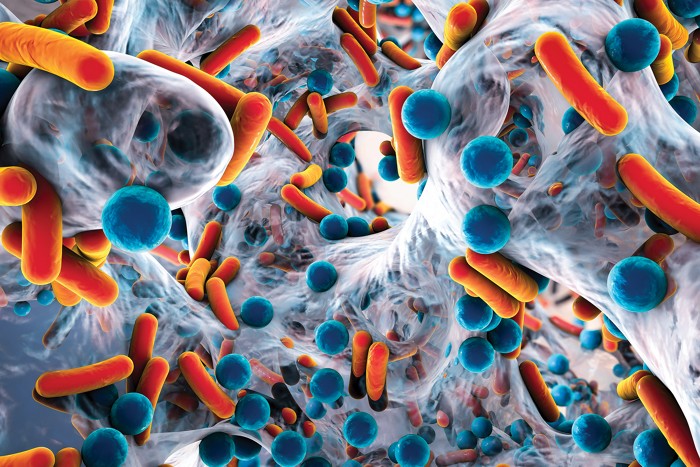When bacteria infect our bodies, they sometimes form sticky mats of sugars and proteins called biofilms to protect themselves. This viscous layer makes it difficult for antibiotics and immune cells to reach the invading microbes, rendering usual therapies less effective. Researchers, led by Li Zhang at the Chinese University of Hong Kong and Ben Wang at Shenzhen University, demonstrated that magnet-driven, light-activated microrobots can cut through this goo and fight biofilms in the sinuses of animals (Sci. Robot. 2025, DOI: 10.1126/scirobotics.adt0720).
“We saw microrobots as a promising way to physically navigate into these hard-to-reach spaces” and attack bacteria directly, says Zhang in an email.
Other scientists have previously proposed using microrobots, which are smaller than 1 mm, to target and disrupt biofilm formations, either mechanically or by delivering chemicals that kill bacteria. But biofilms in the sinuses present a unique challenge for microrobots because our natural immune response to a sinus infection produces a viscous pus that’s hard to get through.
The researchers got around this sinus buildup problem by designing their bots to stir up the goo. External magnets placed near the sinuses guide the robots to align into chains and form spinning swarms that create a mechanical force to break up both thick sinus fluids and biofilms.
The microrobots themselves have a magnetic core and a shell of copper-doped bismuth oxoiodide (BiOI), a light-sensitive material. When exposed to visible light delivered by an optical fiber guided magnetically into the sinuses, electrons in the BiOI jump to a higher energy level, leaving behind positively charged holes. In this electron-hole pair, the excited electrons can react with oxygen to form superoxide radicals, while the holes react with water to produce hydroxyl radicals—both species are toxic to bacteria.
When the BiOI absorbs light, it also heats up, which further breaks down mucus and biofilms.
In live rabbit sinuses, the robots cut through thick mucus and destroyed bacterial biofilms without damaging healthy tissue. In pig sinus tissue, which is more anatomically like human sinus tissue, the microrobots also destroyed biofilms, with only 3% of bacteria surviving the treatment.
“Any piece [of the system] is not particularly novel, but the combination is certainly an advancement,” says Edward Steager, an expert in microrobots for medical applications at the University of Pennsylvania.
After the treatment, cilia in the sinuses, which are tiny hair-like structures that move mucus, can clear out the microrobots.
The researchers think the treatment, with some modifications, could be expanded to treat biofilms in other parts of the body, like the gastrointestinal or urinary tract.
Zhang plans to conduct larger-scale animal studies with the robots and says the team is also exploring prototype development for human clinical trials.
